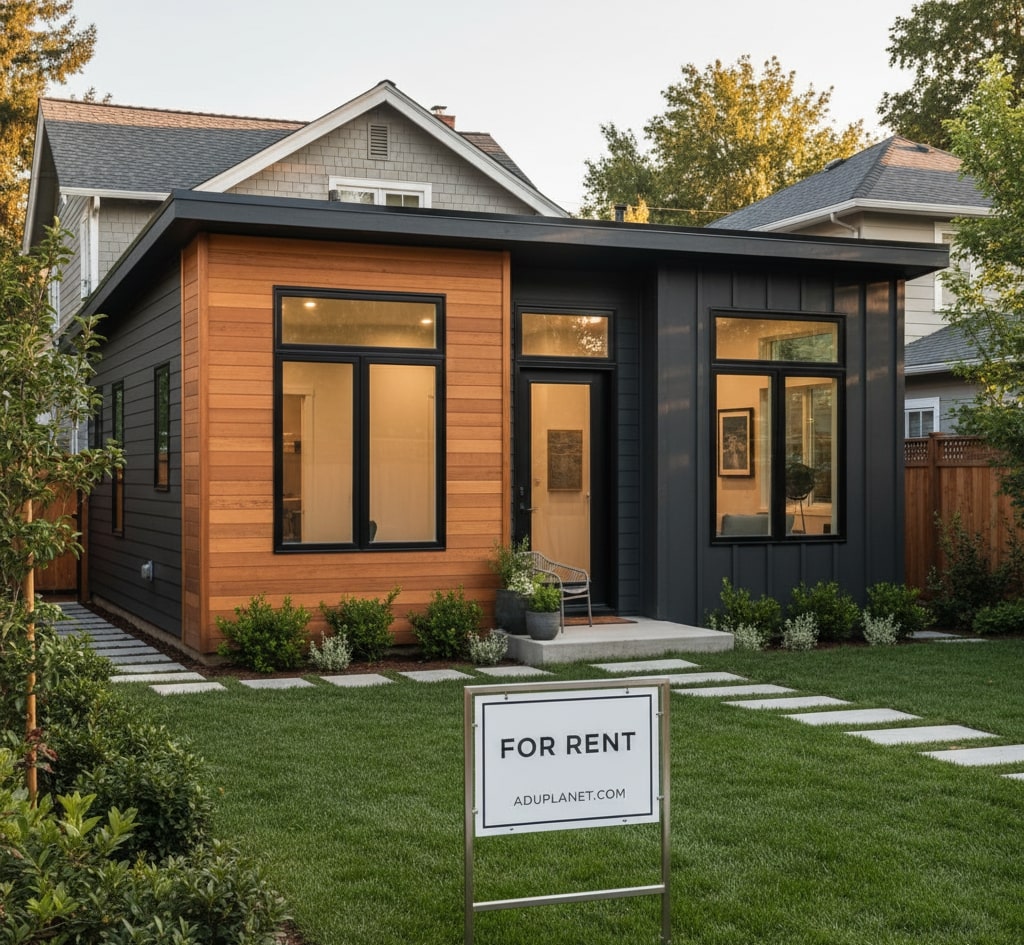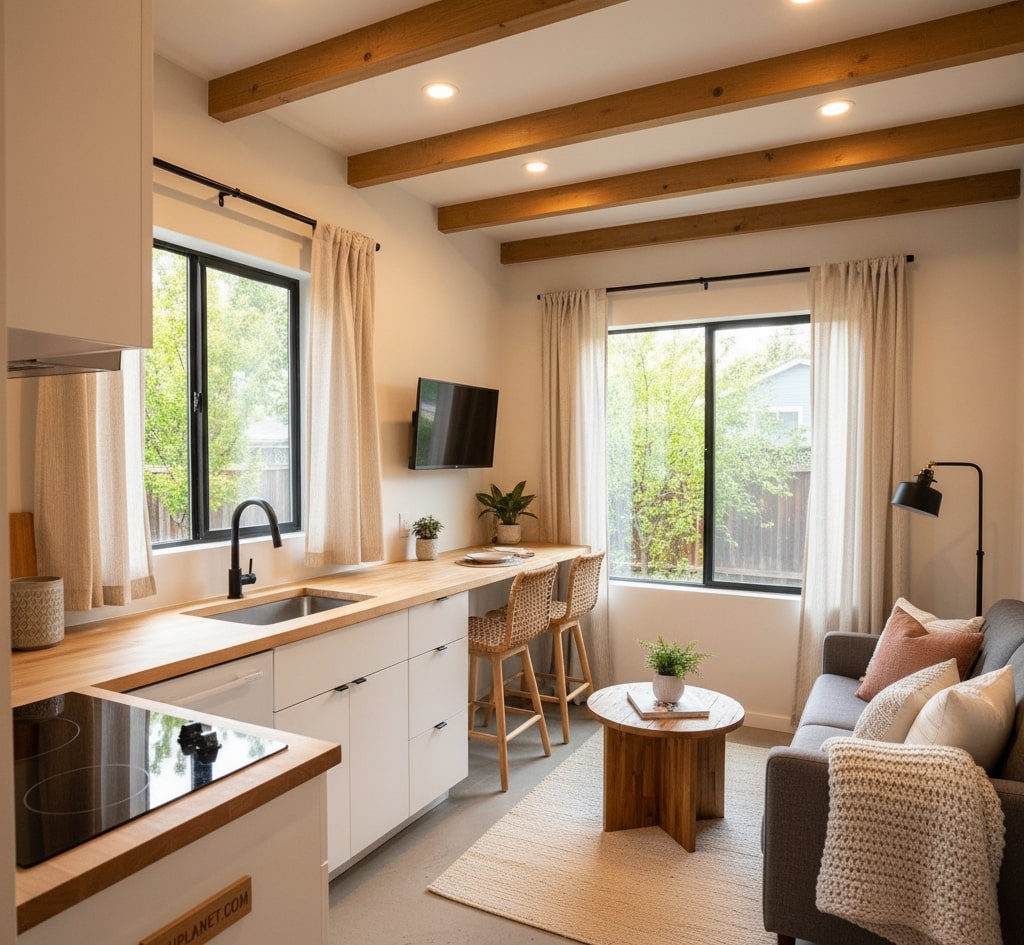Overview
Building an ADU is equal parts design dream and spreadsheet reality. The good news: you have options. The tradeoffs are predictable—speed vs paperwork, flexibility vs rate certainty, draw schedules vs lump sums. This guide explains four common paths so you can pick a lane and move forward without second-guessing.
Quick comparison
| Option | Best for | Rate style | Cash timing | Speed to close* | Paperwork* |
|---|---|---|---|---|---|
| HELOC (home equity line) | Staged spending, rapid start, flexibility | Typically variable | Draw as needed | Fast | Light |
| Cash-out refinance | Single fixed payment, rate reset | Fixed (new first mortgage) | Lump sum at closing | Medium | Medium |
| Construction loan | New build with contractor & draw schedule | Varies; often converts/refis after build | Draws during construction | Slower | Heavy |
| FHA 203k | Renovations/garage conversions with FHA eligibility | Fixed (FHA program) | Draws with inspections | Slower | Heavy |
*“Speed” and “paperwork” are relative editorial scores; confirm details with your lender.
HELOC: flexible and fast
A home equity line of credit functions like a reusable checkbook backed by your equity. You draw funds as you need them for design fees, surveys, permits, and progress payments. During the draw period, many HELOCs allow interest-only payments, which keeps cash flow light while you build. Once the ADU is complete, you can continue using the line for upgrades or pay it down with rental income.
- Upside: Quick access, you only pay interest on what you use, and you can match draws to your contractor’s schedule.
- Watchouts: Variable rates can rise. Some lenders limit draws near the end of the draw period, and lines can be reduced if values fall.
- Good fit when: You have solid equity, want speed, and prefer flexibility over long-term rate certainty.
Cash-out refinance: one fixed payment
With a cash-out refi, you replace your current mortgage with a new, larger one and take the difference in cash at closing. You get a single fixed rate and one payment. Owners choose this when they’d like to lock a rate and simplify budgeting.
- Upside: Fixed payment predictability; no separate second lien.
- Watchouts: You restart the mortgage clock and pay closing costs on the full balance. If your current rate is low, replacing it may be costly.
- Good fit when: You’re comfortable resetting your mortgage and want a one-payment plan with fixed terms.
Construction loan: purpose-built for new ADUs
Construction loans are designed for ground-up builds and major conversions. Funds are released in draws tied to milestones (foundation, framing, rough-in, finishes). Inspections verify progress before each draw. Many products convert to a permanent mortgage at completion; others require a refinance. During construction, payments are often interest-only on the amount drawn.
- Upside: Built for contractors, draw schedules, and inspections; can cover soft costs and contingencies.
- Watchouts: More paperwork and time. Requires a detailed budget, plans, and signed contracts. Appraisals may use “as-completed” value.
- Good fit when: You’re doing a full ADU build with a licensed GC and clear schedule.
FHA 203k: renovation-friendly for eligible projects
The FHA 203k program can fund renovations (including eligible garage conversions) under FHA guidelines. It’s attractive to some first-time buyers and owners with limited down payment, but it carries extra steps: using FHA-approved lenders, working with a 203k consultant, and meeting scope limits. Draws are disbursed after inspections.
- Upside: Access to FHA terms; pairs well with renovation scopes.
- Watchouts: Extra process and fees, capped scopes, and property eligibility rules.
- Good fit when: Your ADU is part of a broader renovation and you qualify for FHA.

ADU payment calculator (with interest-only support)
Enter rough numbers to see payments across options. For construction loans, use the interest-only toggle for the build phase. This is an educational tool—actual terms vary by lender.
Payment composition
Numbers are illustrative only. Verify terms, fees, and prepayment rules with your lender.
Watch: short explainer clips

How to choose in 20 minutes
- Check equity and cash cushion. If you need staged access and speed, shortlist a HELOC or construction loan.
- Decide on rate certainty. If a fixed payment matters most, explore cash-out or fixed construction-to-perm options.
- Align to your build plan. If you have a GC, plans, and a draw schedule, a construction loan fits the process.
- Map the monthly payment. Use the calculator to test a 6–12 month interest-only window during construction.
- Compare total cost of capital. Include lender fees, points, required reserves, inspections, and conversion/refi costs.
- Sanity-check your rent or savings. If renting, pencil conservative rents and 5–10% vacancy. If for family use, weigh value and flexibility over cash return.
When you have two finalists, request written estimates on the same day so rate environments are comparable. Ask for both payment and APR (annual percentage rate, which includes certain fees). Then choose the pairing of timeline and paperwork you can live with.
FAQ
Can I combine options? (e.g., HELOC now, refinance later)
How do draws work on construction loans?
What credit and documents do lenders expect?
Are rates better for primary residence projects?
Can rental income from the ADU help me qualify?
What about incentives or rebates?
Next steps
- Price your project with our cost calculator.
- Confirm what you can build on your lot via the regulations hub.
- Get introductions to lenders and vetted builders with one form: /estimate.
